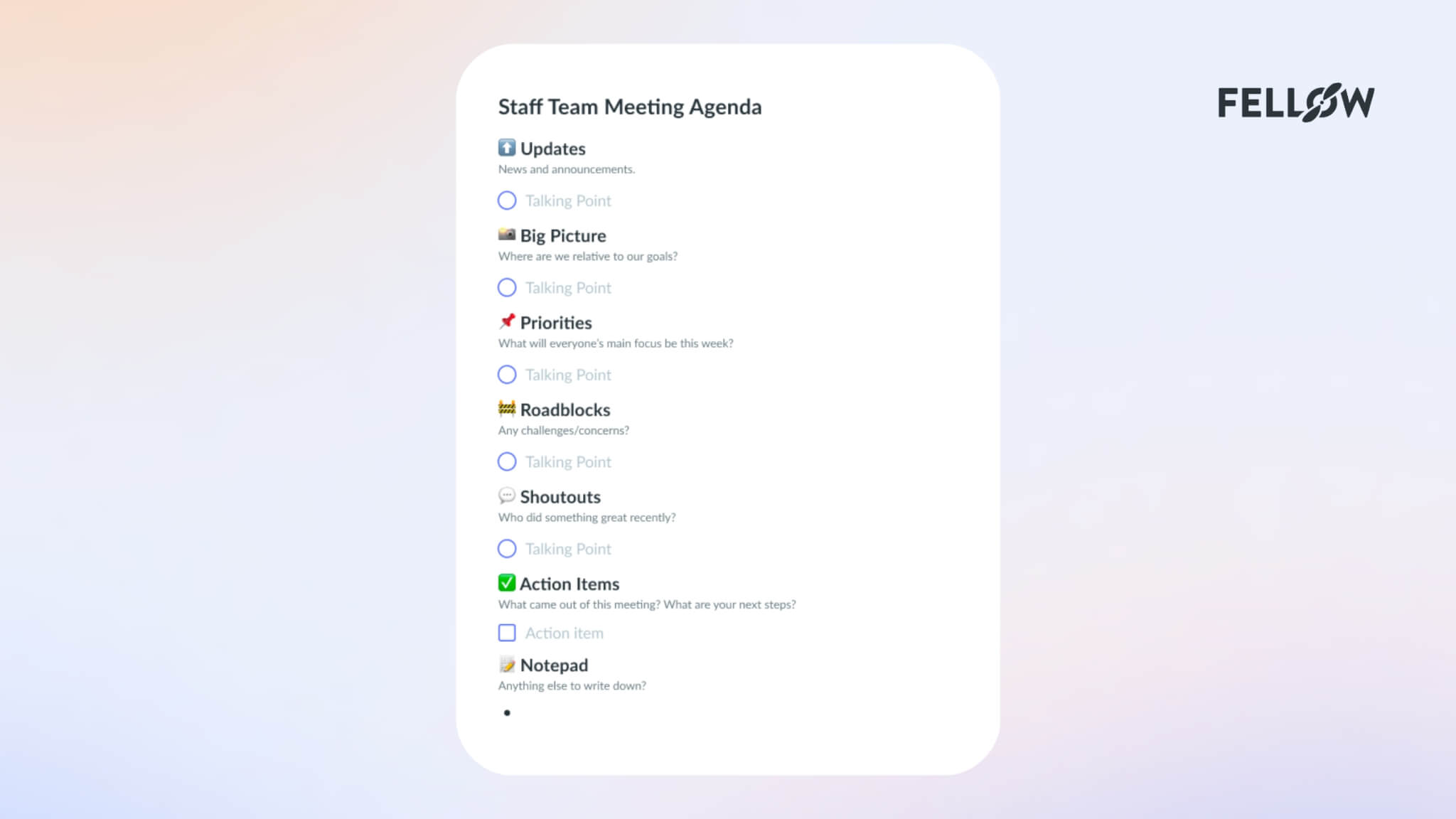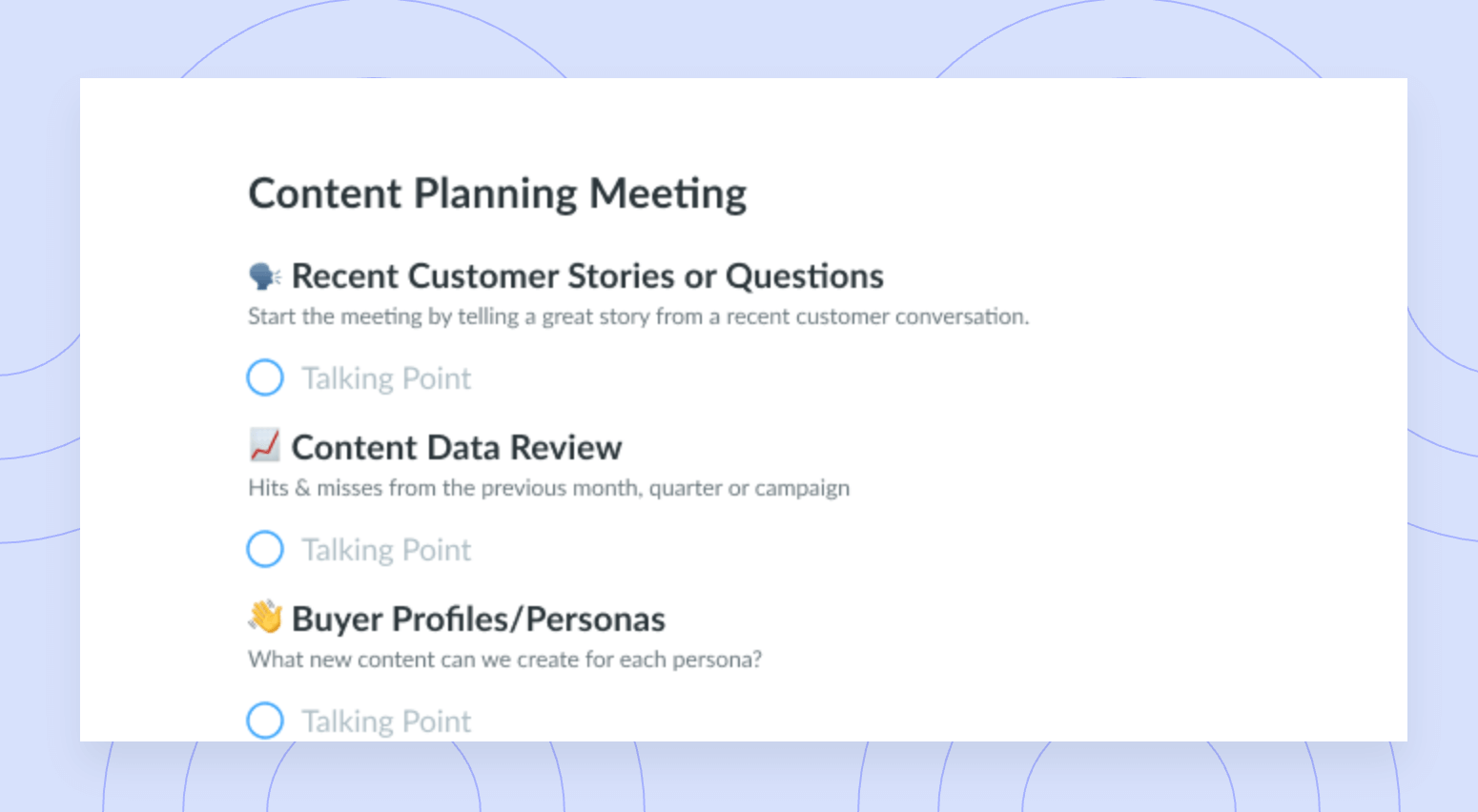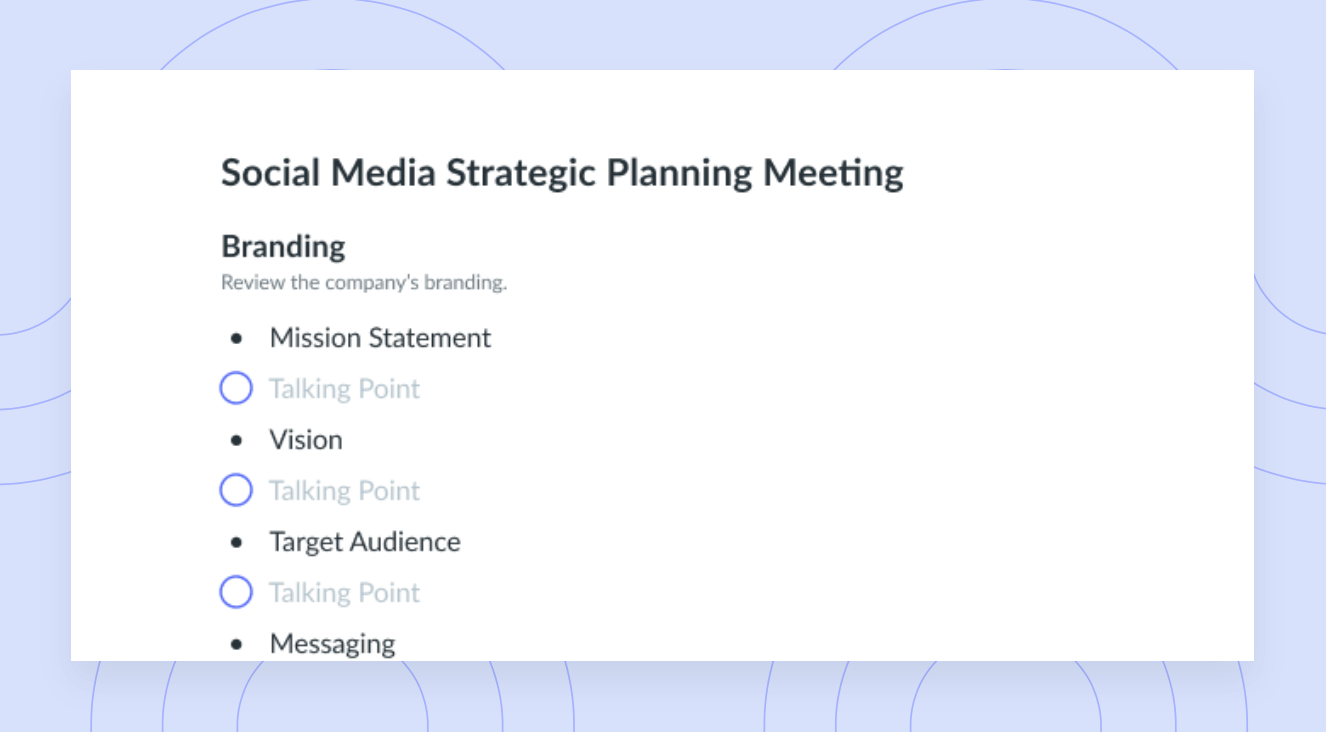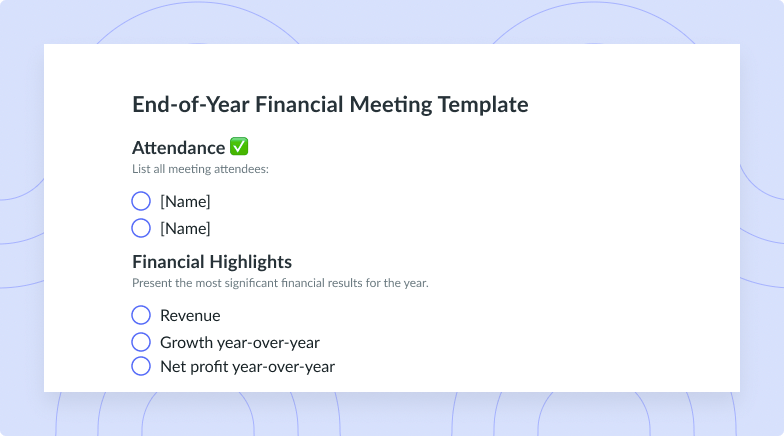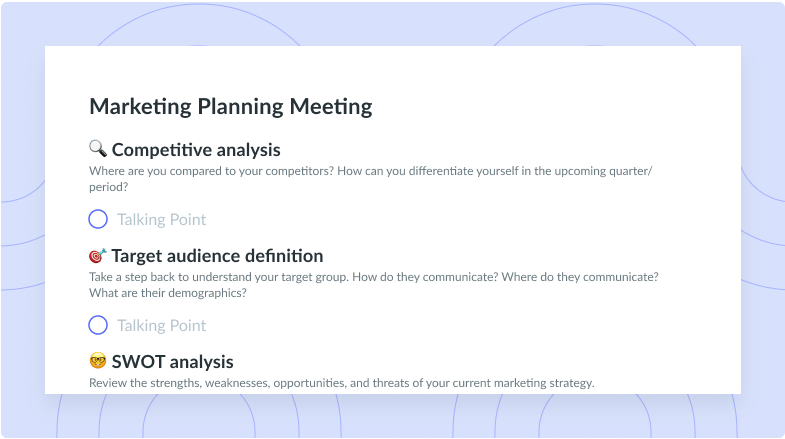Effective Strategies for Corporate Meeting Planning
Learn how to plan and execute your next corporate meeting effectively for maximum productivity and success with these best practices.
Things change fast in modern business, and corporate meetings are where key strategies are brainstormed, essential conversations are had, and crucial decisions are made.
Corporate meetings are where top-level attendees come together to collaborate, innovate, and make impactful decisions for the entire organization. Since these meetings are so important to the success of organizations, it’s crucial that effective planning and execution take place before the meeting begins.
Let’s dive into how to make your next corporate meeting a success and how corporate meeting management software can help.
- What is a corporate meeting?
- The importance of corporate meetings
- How to organize a productive corporate meeting
- Corporate meeting best practices
What is a corporate meeting?
A corporate meeting isn’t your typical video call or quick meeting in a conference room.
A corporate meeting is a structured team meeting that brings key stakeholders, directors, senior management, and C-suite executives across the organization together to brainstorm, plan, or strategize with the goal of getting on the same page about what to expect in the upcoming months.
These meetings can occur in an office setting or virtually, but they usually require more than one session. Some could span most of the workday or occur over multiple days—this will depend on the meeting’s goals and purpose.
Because of this, it’s important for there to be formal meeting minutes to document important decisions. Meeting minutes are a written record of the conversation and decisions made throughout the corporate meeting. Using corporate meeting management software like Fellow to document meeting notes ensures relevant information, follow-up points, and next steps are all in one place.
Just like any meeting, be sure to kick things off by setting the tone for long-term success with trust and respect among attendees. Consider beginning by highlighting current wins or giving a shout-out to an employee who has gone above and beyond.

Your meeting problem, solved.
Fellow is the only all-in-one meeting solution that combines AI, behavior-driving features, and seamless integrations so you can have fewer, more effective meetings and 1-on-1s.
The importance of corporate meetings
It’s crucial for corporate meetings to take place, no matter the size of your organization or the industry it’s in, as they can help foster accountability and help the company reach success. Additionally, these meetings help to support:
- Decision-making processes: From hiring to revenue and budget, corporate meetings are where important decisions occur. And since shareholders will be in attendance, their input and consent are must-haves for important decisions that will impact the rest of the organization.
- Strategic planning: It’s common for corporate meetings to be seen as business meeting planning sessions. Honing in on strategy with so many valuable voices present will ensure all relevant opinions and ideas are brought to the table.
- Information sharing: Details that center around how the company is moving toward specific deadlines, goals, and milestones will likely also be a topic of conversation. Corporate meetings are when you can get everyone up to speed on crucial information so that everyone is on the same page regarding updates.
- Innovation and creativity: With so many important contributors as meeting attendees, corporate meetings are also a great time to innovate and be creative. This could mean brainstorming solutions to problems, new ideas, or ways to pivot a strategy.
- Accountability and transparency: Even when an update isn’t necessarily positive, it’s important to have accountability and transparency with the information being shared in corporate meetings. Whether it’s a plan surrounding a reduction in force or a hiring freeze, it’s important these conversations are as honest and straightforward as possible.
How to organize a productive corporate meeting
Follow these eight steps to organize a productive corporate meeting from start to finish.
- Set clear objectives
- Share a collaborative meeting agenda
- Choose relevant topics
- Assign meeting roles
- Send out the agenda in advance
- Encourage participation
- Keep the meeting on track
- Leverage AI
1Set clear objectives
The first step in holding a productive corporate meeting is to set clear meeting objectives. It’s common to confuse a meeting’s objectives with the meeting purpose, but the purpose is why the meeting is being held, and the objectives cover the outcome you wish to accomplish once all is said and done.
Whether the meeting objective is to form a concise plan, solve problems, brainstorm solutions, make important decisions, or build morale, ensure it’s clearly established before the meeting.
2Share a collaborative meeting agenda
Next, be sure to create a collaborative meeting agenda to which all attendees can add ideas and talking points.
With corporate meeting management software like Fellow, you can build meeting agendas collaboratively to make sure the meeting is productive and purpose-led. Nothing falls through the cracks, and you can make sure there’s time throughout the meeting to hit all topics of conversation.
Additionally, Fellow makes it easy to delegate and track action items and decisions once the meeting ends. With so many important stakeholders, leaders, and managers as attendees in these meetings, holding everyone accountable by following up on assigned tasks is important.
3Choose relevant topics
When the corporate meeting agenda is being created, consider the best and most relevant topics to add so attendees can come prepared for the discussions. The topics you choose will likely depend on how often your organization holds corporate meetings, but some common topics are:
- Company news
- Customer stories
- Quarterly goals
- Updates on current projects
- Organizational changes
- Major wins and goals accomplished
- Feedback
- Roadblocks
- Improvements
- Wins and losses
4Assign meeting roles
Another way to ensure all corporate meetings are productive and efficient is to assign meeting roles ahead of time. The details of who has been assigned which meeting role should also be included in the meeting invite.
It’s important to define clear meeting roles to ensure that your corporate meetings are effective and organized, create and leave time for conversations where everyone’s voices are heard, promote an environment of psychological safety, and leverage technology like Fellow to boost meeting productivity.
Some roles you can assign ahead of time are:
- Organizer
- Host
- Note-taker
- Timekeeper
5Send out the agenda in advance
The most effective meetings are the ones where the agenda is sent out to all attendees in advance. This allows everyone joining to review the corporate meeting agenda, familiarize themselves with their potential meeting role, and show up prepared. Being able to check who else will be in attendance and what the topics are makes it possible for attendees to show up with questions, details to share, and customer stories to highlight.
With Fellow, you can also set up pre-meeting reminders to automatically remind attendees to review or contribute to the agenda, ensuring everyone is prepared and engaged.
It’s also easy to show up ready to brainstorm specific challenges when you can review the agenda before a meeting begins.

Set the stage for meetings that move work forward
Make meetings collaborative and productive with AI-enabled meeting preparation tools and agendas that provide context, structure, and accountability.
6Encourage participation
No one likes attending a meeting where just one person talks the entire time. Having participation from all attendees helps to make meetings more engaging and productive. Plus, meeting participation is a sign of a strong, collaborative team, which is especially crucial for corporate meetings with so many important attendees present.
In addition to sending the agenda in advance and assigning meeting roles, you can encourage participation by:
- Asking for input and feedback throughout the meeting
- Asking for presentations from multiple attendees
- Kicking things off with an icebreaker
- Allowing time for questions
- Encouraging active listening
7Keep the meeting on track
Another tip is to do your best to keep the meeting on track. To help do this, take advantage of your agenda. Not only is a completed agenda helpful for preparing before the meeting but it can also be used as a roadmap to guide the meeting as it transpires.
Consider the time allotted for each topic and steer the conversation back to the planned discussion points if it veers too far off course. Doing so is also important to ensure there is time at the end of the meeting and between topics for questions, comments, or concerns.
8Leverage AI
Finally, don’t forget to leverage artificial intelligence (AI) during corporate meetings. For instance, teams can use Fellow’s AI functionalities to elevate their corporate meetings from beginning to end—starting with saving time by taking advantage of the AI-generated meeting agendas or suggested topics to prepare for the meeting.
Fellow’s AI Meeting Copilot can also ensure accountability and follow-through by automatically recording, transcribing, and summarizing the corporate meetings so attendees can stay focused and engaged in the conversation. At the end of the meeting, Fellow can also outline any action items, including who is responsible and the deadline for completion. These transcriptions and action items are also searchable, making it easy to find key discussions, decisions, and next steps to share with relevant stakeholders after the meeting.
Corporate meeting best practices
Consider the following best practices to ensure your company’s next corporate meeting is effective, engaging, and informative.
- Have a clear agenda: Distribute a detailed agenda outlining topics to be discussed before the meeting to help participants prepare and stay on topic.
- Define the purpose: Clearly state the purpose of the meeting and the desired outcomes to focus discussions and ensure time is used productively.
- Be selective with attendees: Invite only those who are necessary for the topics at hand to keep meetings focused and efficient.
- Foster psychological safety: Create an environment where all attendees feel comfortable contributing to foster diverse input and collaboration.
- Assign action items: Clearly assign tasks with deadlines at the end of the meeting to ensure follow-up and accountability.
- Leverage technology: Use meeting management tools to organize, document, and facilitate meetings, especially when managing remote participants.
Parting advice
Effective meetings don’t happen by accident—they require thorough planning and careful consideration. Follow these tips to organize your next corporate meeting to ensure it’s as productive as possible. Take it one step further by using meeting software like Fellow to streamline meeting agendas, notes, minutes, follow-up items, and so much more.






